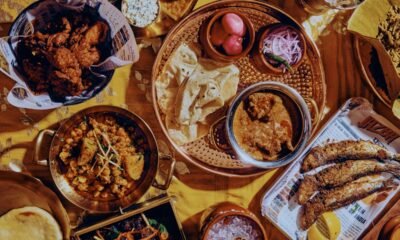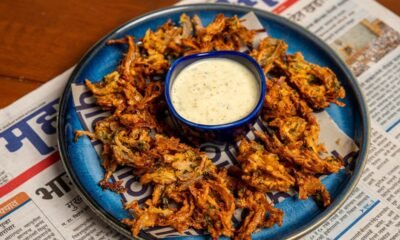Restaurants & Food
How culturally local foods are mushrooming in India
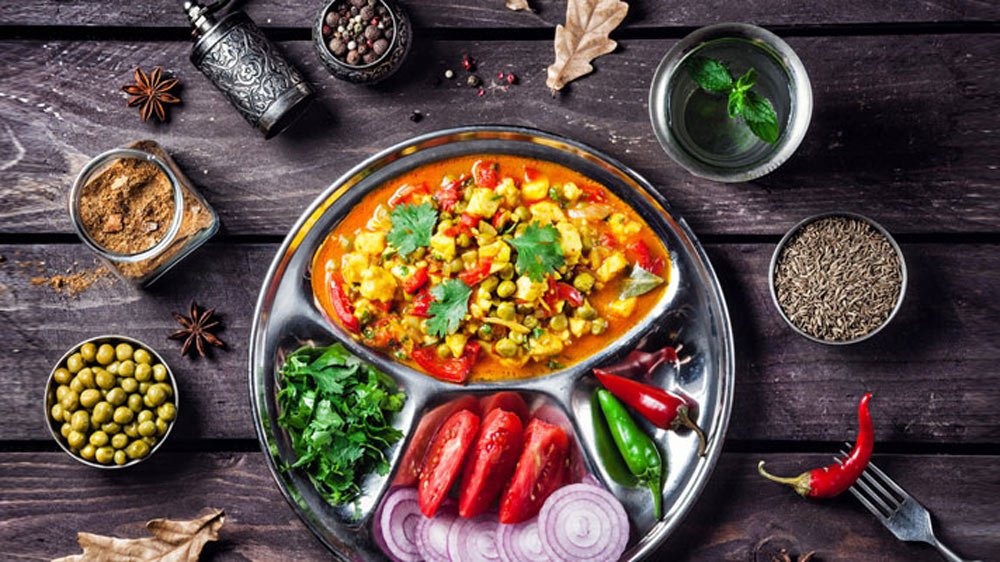
Any restaurant’s dining experience starts long before the main entrée is served. The appetizer serves as the foundation for that important first impression. Appetizers, often called starters or hors d’oeuvres, are small, flavorful dishes served before the main course of a meal. Instead of filling diners up, their main function is to pique their hunger and prepare their taste. A well-chosen beginning is more than simply a warm-up act; it sets the tone for the entire meal by stimulating the palate, revealing the skill of the kitchen, and offering a chance for communal delight. However, choosing the ideal opener can occasionally feel difficult due to the wide variety of menus that restaurants around the world are offering.
Also, the quality of the appetizers frequently determines the mood of the entire dinner, whether you’re dining in a busy restaurant in your area or visiting an Indian restaurant anywhere in the world. Indian appetizers are meant to stimulate the taste buds, ranging from hot tandoor-baked bites and crunchy fried treats to spicy street food thrills. The top 10 greatest appetizers that guarantee a memorable beginning to your real Indian dining experience will be revealed in this article, which will explore the diverse world of Indian restaurant appetizers.
What’s new: A Guide to Procurement in Restaurants
The Art of the Appetizer
Beyond merely satisfying immediate hunger, appetizers play several important roles:
- Palate Preparation: They prepare your taste buds for the main event by serving as a delicate introduction to the flavors that will follow. A rich, savory appetizer could create anticipation, while a light, acidic one might clear the palate.
- Showcasing Culinary Skills: Appetizers are frequently a platform for the kitchen’s innovation and accuracy. A well-prepared appetizer can reveal the chef’s quality and attention to detail.
- Promoting Sharing: A lot of appetizers are made to be shared, which encourages interaction and conversation at the table. This social element enhances the whole meal experience.
- Diverse Options: A variety of options are available to suit a wide range of tastes and dietary requirements, from crisp and fried to fresh and light, from filling and cozy to sophisticated and exquisite.
Over time, the appetizer has evolved from straightforward finger foods to complex little plates that occasionally even function as a light dinner in and of themselves. Because they represent tastes from all around the world, they are evidence of global culinary influences.
Best Appetizers in Restaurants
1. Samosa
It’s difficult to picture an Indian restaurant menu without the samosa as the star dish.
Samosa is the most popular street food in North India and one of the best appetizers one can find at an Indian restaurant. A samosa is a triangular pastry that is filled with a flavorful and aromatic substance that is usually deep-fried till golden crisp. Spiced mashed potatoes and green peas are the most popular filling, but paneer or minced beef (keema) are also frequently used.
Flavor Profile: A soft, earthy, and warmly spiced filling takes the place of the flaky, crispy crust. With undertones of coriander, cumin, and occasionally a dash of acidity, the flavors are delicious. They are nearly always served with fresh, spicy mint-coriander chutney and tangy tamarind chutney, which offer layers of fresh, sour, and sweet flavors.
Why it’s Most Ordered: For both new and experienced fans of Indian vegetarian appetizers, its comfortable flavor profile, pleasant texture, and widespread availability as a street meal throughout India make it a popular and well-known option.
Read this: 8 Unique Flavors of Rajasthani Street Food to long for
2. Paneer Tikka
This is an icon of vegetarianism. Paneer Tikka is frequently the first pick for diners looking for a tasty vegetarian option. To make paneer tikka, diced bell peppers, onions, turmeric, coriander, cumin, ginger-garlic paste, red chili powder, and more powerful spices are used to marinate cubes of fresh Indian cottage cheese (paneer) in a colorful mixture of yogurt. After that, they are skewered and cooked to perfection in a clay oven, or tandoor.
Flavor Profile: The paneer’s interior stays very creamy and soft, while the edges get a smoky char from the strong heat of the tandoor. Due to the marinade, deep flavors are added to the paneer, the yogurt adds acidity, the chilies add subtle spice, and the spices add scent.
Why it’s Most Ordered: Particularly among people who prefer non-meat choices but still yearn for a smoky, strong appetizer, its rich flavor, pleasing texture, and reputation as a substantial yet light top Indian starter make it immensely popular.
3. Tandoori Chicken
The Tandoori King. Tandoori chicken is a worldwide-recognized non-vegetarian appetizer dish. Bone-in chicken chunks (often legs and thighs) are sharply scored to allow maximum flavor penetration, then marinated for hours in a mixture of yogurt, ginger-garlic paste, red chili powder, turmeric, garam masala, and other spices. This gives it its unique bright red or orange hue. It is then slowly cooked over high heat in a tandoor until soft and juicy.
Flavor Profile: The tandoor’s tremendous heat produces a gorgeously smoky, slightly browned exterior while sealing in the liquids, resulting in incredibly soft and juicy meat. The marinade’s flavor is intensely flavorful, earthy, and aromatic, with a mild kick.
Why it’s Most Ordered: Its legendary position, mouthwatering softness, and the distinct smoky taste given by the tandoor make it an all-time best-seller among Indian non-vegetarian appetizers.
4. Pakora
The Crispy Delight. When you’re yearning for something crunchy and comforting, pakora is the way to go. A variety of ingredients, including thinly sliced onions (onion bhajia), potatoes, spinach, or paneer, as well as chicken or fish pieces, are coated in a spicy gram flour (besan) batter and deep-fried till golden and crisp.
Flavor Profile: The airy, crispy outer shell contrasts nicely with the soft, savory interior. The spices in the batter create a pleasant heat, and they are usually served with a selection of chutneys for dipping.
Why it’s Most Ordered: Its sheer variety, delightful crunch, and ease of sharing make it a popular Indian finger food, ideal for pairing with a hot beverage like tea or as a pre-meal snack.
Read more: Best Dishes in North East Indian Cuisine
5. Seekh Kebab
The Succulent Skewer. A flavorful and aromatic option, especially popular in North Indian and Mughlai restaurants. Finely minced meat (often lamb or mutton, but chicken and beef variants are also popular) is combined with finely chopped onions, ginger, garlic, green chilies, and a mixture of ground spices such as coriander, cumin, and garam masala. This mixture is then carefully shaped around skewers and grilled in a tandoor.
Flavor Profile: Extremely flavorful, smoky, and soft, often melting in your mouth. The spices add fragrant depth without dominating the flavor of the luscious meat. It’s usually served with raw onion rings and a tangy mint chutney.
Why it’s Most Ordered: Its luxurious texture, rich flavor, and reputation as a royal kitchen classic make it a popular top Indian dish among those who value sophisticated meat preparations.
6. Pani Puri/Golgappe
The Flavor Explosion. A legendary street food experience that has cemented its place on restaurant starter menus. Puris or golgappe are small, hollow, crisp fried spheres composed of semolina or wheat that have been partially cracked apart. Diners then pile on a spoonful of spiced mashed potatoes or chickpeas, followed by a large pour of cool, acidic, spicy, and often mildly sweet flavored water (pani), which is laced with tamarind, mint, coriander, and other spices.
Flavor Profile: A thrilling, multi-sensory explosion in a single bite: the initial crunch of the puri, followed by the soft filling, and finally the refreshing, zesty, and spicy liquid that floods the palate.
Why it’s Most Ordered: It’s an engaging, playful, and unique snack. It’s complex layering of flavors and textures, combined with its popularity as a street food staple, makes it an irresistible and entertaining option for diners.
Know this: 5 superfoods that are good for liver health
7. Chicken 65
The Fiery and Tangy Kick. It is a highlight from South India that has achieved widespread appeal across the country. Bite-sized chicken pieces are marinated in a vivid and fiery mixture of yogurt, ginger-garlic paste, curry leaves, red chilies, and a special South Indian spice combination. These marinated pieces are then deep-fried until crispy and are sometimes mixed with a mixture of fresh curry leaves and green chilies for an added blast of flavor.
Flavor Profile: Known for its intense spicy sensation, which is complemented by a tangy undertone from the yogurt and the distinct aroma of curry leaves. It provides a pleasant contrast between a crispy surface and a juicy, delicate interior.
Why it’s Most Ordered: Its characteristic powerful flavors and unique chili-tang combo make it a highly addictive and popular Indian non-vegetarian appetizer, especially among people who love a little heat and strong, punchy flavors.
8. Gobi Manchurian/Chilli Paneer/Chilli Chicken (Indo-Chinese Fusion)
The Addictive Fusion, which represents a popular cross-cultural culinary phenomenon. This category contains dishes in which battered and deep-fried cauliflower (Gobi), paneer cubes, or chicken pieces are thrown in a colorful, delicious, spicy, and tangy sauce. The sauce is usually created using soy sauce, vinegar, ginger, garlic, green chilies, and bell peppers.
Flavor Profile: A wonderful crunchy texture combined with a captivating sweet-sour-spicy sauce. It’s extremely tasty and addictive, combining the finest of Indian and Chinese culinary traditions.
Why it’s Most Ordered: The great appeal of Indo-Chinese cuisine in India has made these dishes extremely popular. They provide a familiar yet novel flavor profile, serving as a starting point for many consumers exploring Indian restaurant menus.
Check out: How Sprouts Can Help You Live a Better Life
9. Fish Amritsari
Tender chunks of white fish (such as basa, sole, or tilapia) are coated in a spiced chickpea flour (besan) batter seasoned with ajwain (carom seeds), ginger-garlic, and other aromatic spices. These are then deep-fried till golden, crispy, and well done.
Flavor Profile: The surface is beautifully crispy and flavorful, while the fish inside is flaky, delicate, and juicy. Ajwain has a distinct, slightly spicy, and aromatic flavor that sets it apart. It is usually served with a cool mint-coriander chutney.
Why it’s Most Ordered: As a popular seafood option, it’s a tasty alternative to chicken or paneer. The delicate fish paired with the powerful Punjabi spicing makes it a popular real Indian beginning.
10. Dahi Bhalla / Dahi Vada
Soft, spongy fritters cooked with ground urad dal (black gram lentils) are carefully soaked in water for maximum softness. They are then gently squeezed and immersed in thick, creamy, and typically delicately sweetened yogurt. The meal is then lavishly topped with sour tamarind chutney, spicy green chutney, toasted cumin powder, and chili powder.
Flavor Profile: A harmonious blend of coolness, tanginess, sweetness, and subtle spice. The bhallas are wonderfully soft, nearly melting in your mouth, and make an excellent textural contrast to the smooth yogurt and numerous chutneys.
Why it’s Most Ordered: Its distinct blend of cooling components and vivid flavors makes it an ideal palate cleanser and refreshing complement to richer or spicier main meals. It’s a popular Indian food, especially when served as chaat.
Conclusion
Appetizers at Indian restaurants are more than just introductions; they are bright, diverse, and frequently famous dishes that capture India’s immense culinary complexity. From the timeless charm of the samosa to the spicy explosion of Chicken 65 and the smoky allure of paneer tikka, these top ten most popular appetizers provide a pleasant tour through the country’s many culinary traditions. On your next visit to an Indian restaurant, take advantage of the opportunity to try these popular starters; they are the ideal start to a wonderful Indian meal.
Restaurants & Food
India’s Tribal Cuisines Setting Global Trends
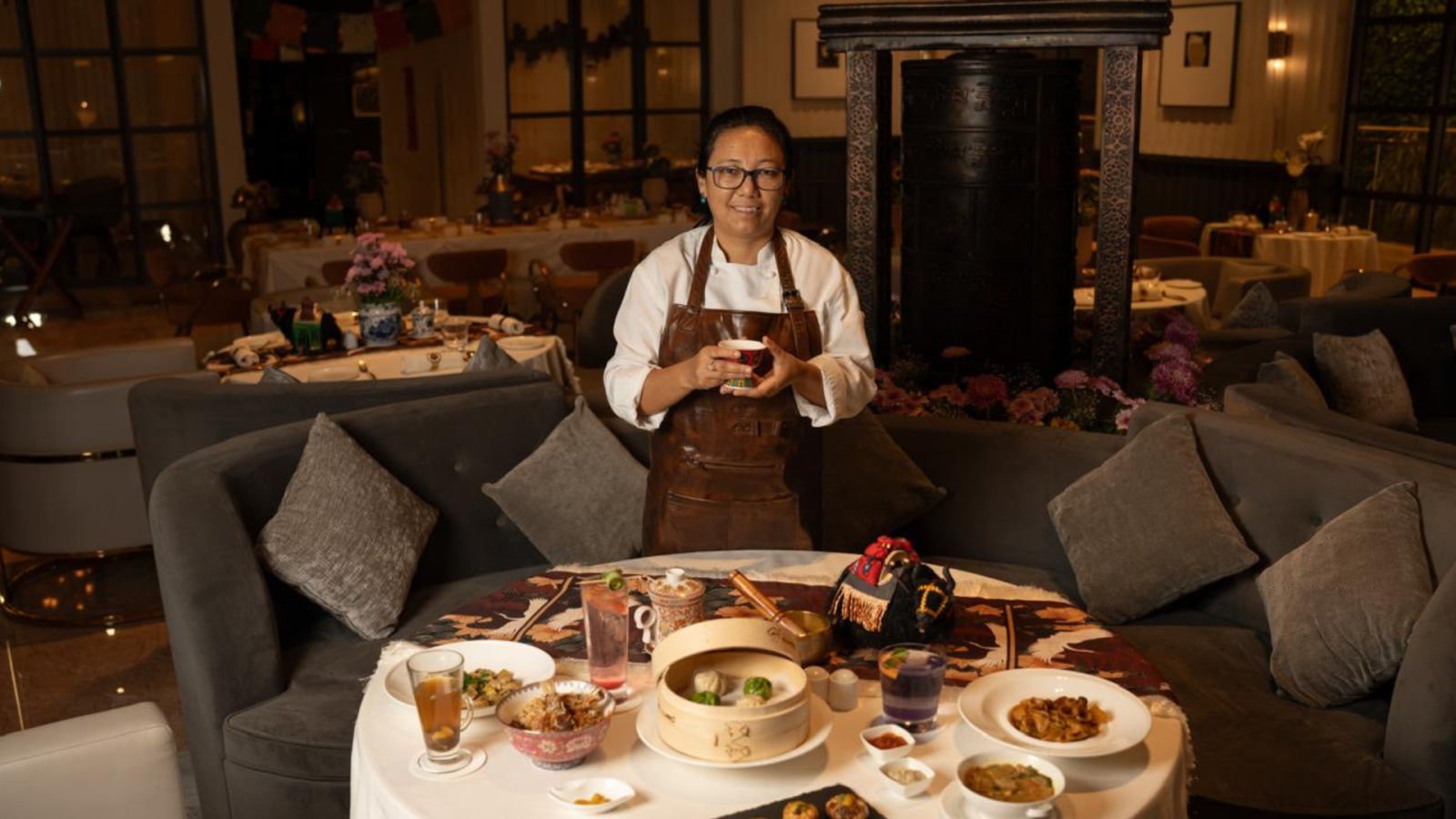
Foraging is a prominent culinary trend in the global dining scene. While it’s incredible to experience hyper-local produce at award-winning restaurants worldwide, it’s vital to remember that foraging has been integral to indigenous cuisines in almost all tribal communities of India for centuries. From Meghalaya and Assam in the Northeast to the rugged landscape of Ladakh and the forests of Jharkhand, communities have thrived due to their deep connection to seasons, forests, and locally available resources. Similarly, culinary buzzwords like ‘sustainability’ and ‘zero-waste cooking’ have been inherent practices in these communities for generations.
Today, highly trained international chefs discuss plant-based foods, local and seasonal produce, and nose-to-tail cooking. However, these have been inherent aspects of traditional cooking even in India’s most remote parts. We spoke to four champions promoting their regional cuisine, documenting it, educating others, and conducting restaurant pop-ups, to highlight indigenous ingredients, special dishes, and cooking techniques passed down through generations.
Revival Of The Forgotten Flavors Of Jharkhand
Jharkhand is home to 32 tribal communities, each with its own distinct food culture. “I’ve been able to document eight of these so far, but that’s just scratching the surface,” says Dr. Manisha Oraon. Not a typical food entrepreneur, Dr. Oraon is a dentist working in rural health, but her true passion lies in preserving Jharkhand’s tribal cuisines, long overshadowed and undocumented. Over the past six years, she has been on a personal mission to document, revive, and innovate upon the indigenous culinary traditions of her homeland. Her work stems from a growing concern of “forgotten identity,” as the traditional foods of Jharkhand—many of which are deeply sustainable and foraged from the forests—are disappearing from everyday lives, surviving only during ceremonies or festivals.
“When I went to the only restaurant in Ranchi that offers tribal food—Ajam Emba—I noticed that it served only the most basic dishes. None of the nuanced, seasonal, or ceremonial preparations were represented,” she laments. Another problem she notes is that people often equate Jharkhand’s food with dhuska or litti chokha, dishes that actually have their roots in the neighbouring state of Bihar. “Our food has a distinct identity that deserves recognition,” she states.
At the heart of traditional Jharkhandi meals is ‘maar jhor’, a staple across tribes in which the broth of an indigenous fibrous, low-glycemic brown rice is used to cook foraged greens. “We never had much access to pulses, so maar jhor became an important source of nutrition,” she explains. Meals also include chutneys, often made from bamboo shoots fermented in stages depending on the season and known locally as sandhana, and mashed preparations like chokha made from roasted tubers. Jharkhand’s cuisine also incorporates edible flowers found in forests, like roselle, kudrum, sania, and hemp flowers that are used in chutneys or added into the maar jhor. The culinary calendar is also in sync with the agricultural and religious one: “We worship trees, and through them, we honour the land and the food it gives us.”
Among the most underappreciated ingredients is mahua, a flower widely misunderstood as being used solely for making local liquor. “That stereotype of villages being alcoholic because of mahua is not only incorrect—it’s damaging,” she says. In reality, mahua has a wide range of uses. “Women eat three soaked mahua flowers in the morning to treat anaemia. We also dry them and use them as natural sweeteners or make them into candies and desserts,” explains Dr. Oraon. In one fascinating preparation, mahua flowers are slow-boiled for hours with roasted tamarind seeds and husk, forming a jaggery-like consistency used as a sweetmeat called mawa latha. “It’s what our people ate when there was nothing else. It was our dessert, a traditional treat,” she smiles. Mahua’s potential also extends to pharmaceuticals and cosmetics, with its seeds yielding oil used for burns and rashes, known locally as dori tel, akin to global shea butter.
Talking about global food trends, Dr. Oraon states that in many ways, Jharkhand’s food system has always been ahead of the curve. It champions nose-to-tail eating, fermentation, slow cooking, and zero-waste practices. It thrives on plant-based biodiversity, incorporates ancient grains like millets, and promotes climate-resilient crops. “We’ve been eating local, foraging, and preserving through sun-drying for generations—what the world is only now calling sustainable,” she says. With innovations like solar dehydrators, her farmer collective is now exploring ways to preserve ingredients more effectively while maintaining nutritional integrity. “We’re trying to combine traditional knowledge with modern techniques to protect what we have,” she says nonchalantly.
Meghalaya’s Tribal Dishes Find Space On Gourmet Tables
As the founder of Tribal Gourmet, A Northeast Indian Pop Up Kitchen, Tanisha Phanbuh’s mission is clear: not just to introduce people to the food of Meghalaya, but to change the way we think about indigenous cuisines from Northeast India. Based in Delhi but rooted in her Khasi heritage, she champions the region’s rich culinary diversity and deep traditions through pop-up kitchens and storytelling that highlight the nuances often overlooked in broader narratives.
“People tend to group all Northeast cuisines into one box,” she says, “but each state—and within them, each tribe—has distinct food traditions shaped by geography, history, and community.” In Meghalaya alone, the food of the Khasi, Jaintia, and Garo tribes varies not only in flavour but also in preparation. Khasi cuisine, for instance, is simple and straightforward, making it a great introduction for outsiders and first-time tasters, while Garo food reflects the state’s tropical climate, often using bolder, earthier ingredients.
A traditional meal in Meghalaya is based on steamed rice, accompanied by a variety of meat, greens, chutneys, and seasonal vegetables. “There’s an innate rhythm to how we eat,” Tanisha explains. “Summer meals are lighter—think stews with chicken or fish—while winters bring heartier fare, with pork, beef, and warming fermented bean pastes.” Interestingly, there’s a cultural preference to include bitter vegetables like bitter gourd or bitter eggplant at lunch, but not at dinner; such subtle dining rules have been passed down through generations.
What sets Meghalaya’s cuisine apart, especially for global audiences, is its deep reliance on hyperlocal and foraged ingredients. “Even in Delhi, I can access 40–50 unique ingredients each week from Northeast markets,” Tanisha says. Some standout elements include michinga, wild Sichuan pepper leaves prized for their heady aroma; tree tomatoes, tangier and meatier than conventional varieties; and sawtooth coriander, a sharper cousin of cilantro. Add to this an abundance of wild mushrooms, seasonal greens, and backyard herbs sourced from villages and forests, each telling a story of the land and the people who tend it.These traditional ingredients and methods are also remarkably in line with global food trends. “Fermentation, for example, is now seen as revolutionary,” she notes. “But we’ve been fermenting bamboo shoots, fish, and soybeans for generations.” Meghalaya’s respect for whole-animal cooking also mirrors the growing ‘nose-to-tail’ philosophy. Dishes like doh khlieh (pig brain salad) and ja doh (a pig’s blood in a risotto-like preparation) reflect not only ingenuity but a cultural reverence for resourcefulness and zero-waste cooking.
“In many ways, our food has been global before the world caught on,” Tanisha says with a smile. “I just wish more people knew about us, and that’s my lifelong goal.”
Ladakhi Cuisine Incorporates Warmth And Energy For The Harsh Climate
High in the trans-Himalayan region of Ladakh, the culinary tradition is deeply shaped by its geography, Buddhist culture, and the harsh yet beautiful climate of the mountains. Ladakhi cuisine is simple yet soul-nourishing with a strong focus on seasonality and sustainability. “Fermentation, drying, and sun-curing aren’t recent health fads here,” says Nilza Wangmo, founder of Alchi Kitchen, an all-women-run restaurant in Alchi. “They are time-honoured practices that our grandmothers taught us, methods that not only preserve food but also enhance its nutritional value, especially in a cold desert like Ladakh.”At its heart, Ladakhi food is an expression of resilience and harmony. Barley, the region’s staple grain, is transformed into dishes like phey or tsampa, while root vegetables, lentils, and wild greens are used in dishes that are as comforting as they are delicious. Even simple preparations like skyur, a fermented dough, or chhutagi, a hand-rolled pasta in a vegetable broth, reveal a delicate balance of texture and flavour. A typical Ladakhi meal is warm and filling, made with what is locally grown, especially essential in a place where winters are long and unforgiving. Flatbreads made from barley or wheat, broths such as thukpa, mokthuk, and chhanthuk, and generous helpings of mok mok (dumplings) make up daily meals. “Lunch might be a simple one-pot dish, but dinner is when the family gathers, especially in winter,” Nilza explains. Butter tea, locally known as gur gur cha, is consumed throughout the day offering both warmth and energy.
Local and foraged ingredients offer a rare insight into Ladakh’s biodiversity. Bright seabuckthorn berries (tsestalulu) bursting with Vitamin C, detoxifying nettles (zatsot), and the tangy native rhubarb (lachu) are not only delicious but also medicinal. Flavour enhancers like skotse (wild chives) and kornyot (wild cumin) deepen the sensory richness of Ladakhi food. These are ingredients that support immunity and well-being, principles now echoed in global wellness trends.
At Alchi Kitchen, the goal is clear: preserve the essence of Ladakhi cuisine while engaging in the global culinary conversation. “We’re deeply rooted in our traditions, but those traditions are now more relevant than ever,” says Nilza. “What the world is asking for—sustainability, plant-based diets, fermented foods, mindful eating—we’ve been doing for generations.” Their farm-to-table philosophy helps minimise food miles and maximise flavour by sourcing from local farms and foraging from the wild. But what sets Alchi Kitchen apart is its commitment to culinary storytelling. Every dish tells a story, that of a grandmother’s recipe, a family memory, or a harvest tradition. “In a fast-paced world, we offer a slow, immersive culinary experience that connects diners to the land, the people, and the past, mirroring the global trend toward experiential, mindful dining,” says Nilza.
The Simplicity, Sustainability, And Soul Of Assamese Home Food
For those who believe food tells the story of a place, Assamese cuisine offers a rich, deeply rooted narrative of heritage, ecology, and restraint. From foraged greens in forested villages to delicate fermentation techniques passed down through generations, Assamese food is a fine example of culinary subtlety and balance.
“As a food enthusiast with a passion for discovering indigenous cuisines, I find great joy in exploring the subtle nuances that define each culinary tradition. When it comes to my own Assamese cuisine, its uniqueness lies in the use of fresh, homegrown vegetables, a restrained yet thoughtful use of spices, and the emphasis on slow cooking techniques. These elements come together to create dishes that are not only deeply flavorful but also rooted in tradition and sustainability, making Assamese cuisine a true gem in the global gastronomic landscape,” says Parnashree Devi, a travel blogger who hails from Assam; she has been sharing the nuances of Assamese cuisine on various platforms.
Fresh, homegrown vegetables, seasonal herbs, and a nuanced use of spices are the cornerstones of this cuisine. Dishes are slow-cooked and designed to nourish. A traditional Assamese thali might feature the staple yellow daal, steamed rice, a mix of sautéed leafy greens (known locally as xaak), and simple but soulful sides like aloo pitika (mashed potatoes) or begun bhaja (fried eggplant). A more elaborate spread might include dishes like mati dail khar (a type of alkaline lentils), poita bhat (fermented rice), or kosuthuri kon bilahir logot, a rustic preparation of tender colocasia leaves with tangy cherry tomatoes. There’s also a wide variety of non-vegetarian fare such as lai xaak gahori (pork with mustard greens), til diya murgi (chicken with black sesame), and haah kumura (duck with ash gourd).
What makes Assamese cuisine so compelling on a global scale is its deep synergy with current culinary movements. “Farm-to-table cuisine is championed unequivocally as it’s a traditional way of life with the use of fresh herbs, wild greens, and locally sourced produce in daily cooking. Gut-friendly staples like fermented mustard seeds and poita bhat have been nourishing our people for centuries,” explains Parnashree. With its slow cooking methods, clean flavours, nutrient-dense dishes, and rich connection to land and heritage, Assamese cuisine is very much at par with global standards.
Related: Arunachal Pradesh Vs Assam — Which Northeast Indian Escape Is Right For You?
Note:
The information in this article is accurate as of the date of publication.
Written By
Restaurants & Food
Indigenous Indian Ingredients: Global Culinary Renaissance
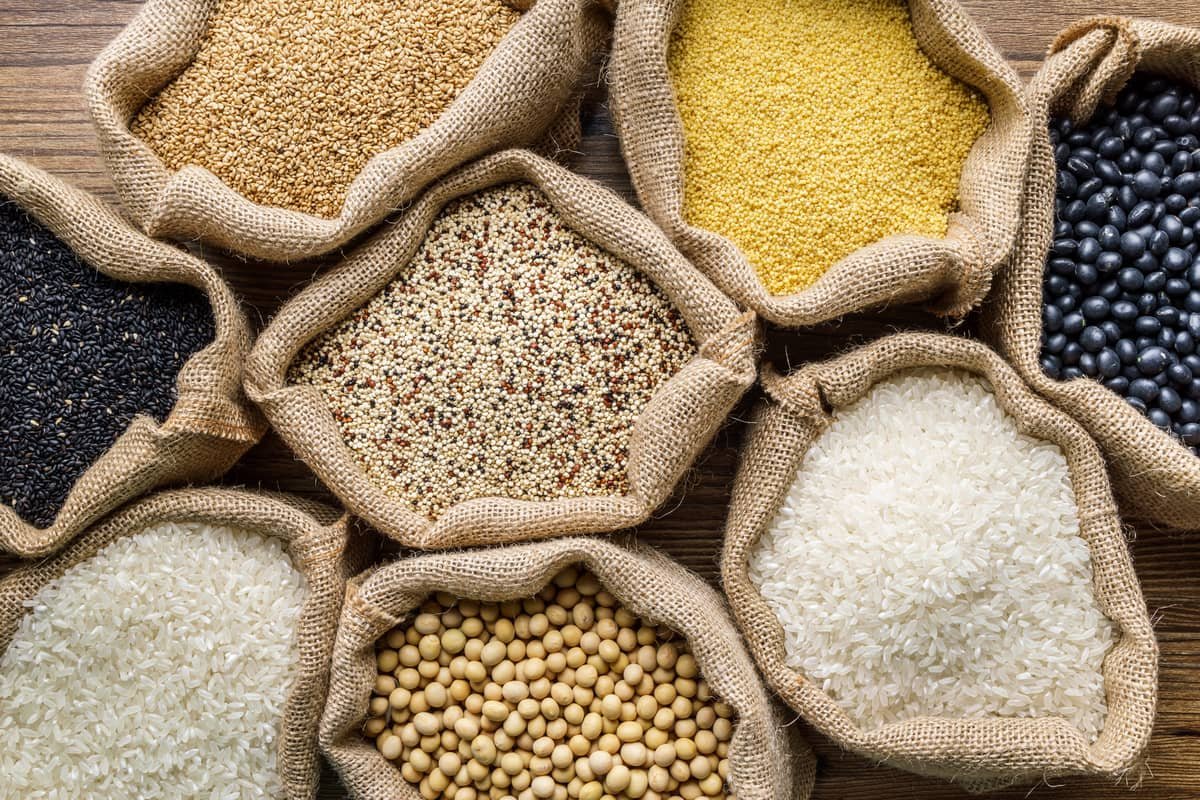
In recent years, the world has witnessed a renaissance of sorts in the culinary landscape — one that sees indigenous Indian ingredients and age-old cooking techniques stepping into the spotlight on global platforms. From Michelin-starred restaurants in London to boutique kitchens in Tokyo and New York, chefs are rediscovering the depth, complexity, and sustainability embedded in India’s food heritage. It’s not just about the curry any more — it’s about charcoal-grilled mustard fish from Bengal, Himalayan foraged greens, wood-fire-roasted meats from the Northeast, and millets made cool again.
From the forests of the Northeast to the spice fields of Kerala, India’s culinary landscape is rich with heritage, biodiversity, and flavours. And now, this once-local treasure trove is being celebrated on a global stage. Chefs, mixologists, and restaurateurs worldwide are not only using indigenous Indian ingredients but also reviving traditional cooking methods, giving them a place of prestige on international platforms. A deep dive…..
Indigenous Indian Ingredients on the Global Plate
India’s food culture is deeply rooted in local produce — often wild, seasonal, and medicinal. Today, the culinary world is embracing these ingredients for their nutritional value, flavour complexity, and cultural richness. Here are some of the most popular indigenous ingredients making waves globally:
Millets, long considered “poor man’s grain”, are enjoying a global resurgence. The UN declared 2023 as the International Year of Millets, and chefs like Rohit Ghai (of London’s Kutir and Manthan fame) are featuring dishes like millet khichdi with truffle oil and foxtail millet upma on refined tasting menus.
Jackfruit, often dubbed as a meat alternative, has become a darling of the plant-based movement. While traditionally cooked as kathal ki biryani or dry sabzi in Indian households, jackfruit tacos and BBQ-style pulled jackfruit are now found in global chains like Wagamama and even Whole Foods pre-packaged meals.
Indigenous Chillies: From bhoot jholokia to guntur, a variety of Indian chillies have made a mark on global menus. A promising example would be the use of Naga chillies at Tabla by Chef Floyd Cardoz and in chutneys at Dhamaka, New York.
Mahua: Another widely used indigenous staple, the mahua flower as well as mahua extract have found their way into menus such as in Ekaa, Mumbai, which uses it to flavour pork belly and desserts.
From Kalari to Churpi, and Kalimpong, India boasts of native varieties of cheeses and chefs have now started popularising them in gourmet dishes. Indian cheesemakers such as Kumaoni Blessings have been popularised by celebrated chefs including Gary Mehigan of MasterChef Australia fame.
Kokum, a souring agent from the Konkan belt, is increasingly being used in wellness drinks and cocktail infusions across upscale bars from Melbourne to Miami. The ingredient’s antioxidant properties and tangy punch have caught the attention of beverage curators like Alex Kratena in Europe, who incorporated kokum shrub into one of his tropical-inspired menus.
A Return to Roots: Traditional Cooking Techniques
Alongside the rise of ingredients is the rebirth of long-forgotten traditional cooking techniques. Indian cooking, often described as complex and laborious, is being re-examined with reverence by chefs and food historians all over the world. The return to slow-cooking, wood-fire, fermentation, and earthenware cooking reflects a global yearning for authenticity.
The Dum Pukht style — slow cooking in a sealed pot — has made its way into fine-dining kitchens from Dubai to Paris. At Trèsind Studio in Dubai (Michelin-starred), Chef Himanshu Saini reinterprets classic Indian dishes using traditional methods like dum to extract deep, soulful flavours. His version of lamb nihari cooked over 12 hours is a masterclass in patience and technique.
The bhuna, dhungar (coal smoking), and tandoori techniques are being reappropriated beyond Indian restaurants. Asma Khan, owner of London’s Darjeeling Express, often demonstrates the traditional use of smoking a dish with a coal and ghee to infuse richness — a method being embraced by food stylists and chefs worldwide for its dramatic flair and depth of aroma.
India’s nuanced approach to fermentation — from idli-dosa batter to rice kanji and achaar — is finally being understood as a sophisticated form of food science. Chefs like David Zilber (former head of fermentation at NOMA, Copenhagen) have referenced Indian pickling and fermentation techniques in his work, acknowledging their precision and diversity.
In New York, Semma, helmed by Chef Vishwesh Bhatt and backed by the team behind Michelin-starred Dhamaka, serves regional Indian fare from Tamil Nadu — all cooked in traditional clay pots. Their goat curry, simmered in earthenware, delivers an earthy depth that steel just can’t match.
Meanwhile, banana-leaf grilling — a staple in Kerala, Tamil Nadu and even Bengal (don’t forget the bhetki paturi!) — is now a theatrical and eco-friendly cooking style found in Thai-Indian fusion eateries in Sydney and LA, as well as London.
Restaurants harnessing Indian heritage:
Semma, New York City
Semma in NYC has redefined Indian cuisine in America by boldly spotlighting hyper-regional, home-style dishes from South India that are rarely seen on Western menus. Led by Chef Vijay Kumar and backed by the Unapologetic Foods group, the restaurant dives deep into the culinary traditions of Tamil Nadu, offering rustic, ancestral recipes like Nathai Pirattal (snail curry) and Venison Sukka. Its unapologetic celebration of authenticity — without diluting spice or storytelling — has earned Semma a Michelin star and positioned it as a cultural force changing the narrative of Indian food in the US.
Snail Curry at Semma, NYC
TresInd, Dubai
TresInd has pioneered a progressive Indian fine-dining movement in Dubai, fusing avant-garde techniques with deeply rooted Indian flavours. Helmed by Chef Himanshu Saini, the restaurant brings molecular gastronomy and modern plating into play while staying true to traditional ingredients and stories. Dishes like the deconstructed pani puri or khichdi of India pay homage to regional classics in a new-age format, making TresInd a trailblazer in elevating Indian food to haute cuisine status in the Middle East.
A5 Wagyu striploin prepared like the classic Pathar Kebab at TresInd, Dubai
Benares, London
Opened by acclaimed chef Atul Kochhar, Benares was one of the first Indian restaurants in the UK to receive a Michelin star, signaling a shift in how Indian cuisine was perceived in the UK. Nestled in the upscale Mayfair district, Benares champions a refined interpretation of regional Indian flavours, marrying them with British ingredients in elegant, globally-influenced dishes. Through its thoughtful menus and stylish presentation, Benares has been instrumental in placing Indian food firmly on the fine-dining map of London, moving it beyond curry-house clichés to culinary prestige.
Murg Jhol Momo served with Foie Gras at Benares, London
Avatara, Dubai
Avatara holds the distinction of being the first and only fully vegetarian Indian fine-dining restaurant in Dubai to receive a Michelin star. Created by the team behind TresInd, it reimagines India’s spiritual and culinary vegetarian roots through a multi-course tasting menu that is both seasonal and deeply philosophical. Chef Rahul Rana leads a kitchen that honors forgotten grains, temple foods, and Ayurveda-inspired techniques, presenting a narrative that shifts the focus from indulgence to introspection while showcasing the diversity of India’s plant-based traditions.
Klaayah, a melange of Bengali green pea luchi with shisho leaves, creamy green pea chokha and mustard-carrot jhol with a touch of green caviar at Avatara, Dubai
Enter Via Laundry is one of Melbourne’s most exciting and intimate dining experiences, founded by Chef Helly Raichura. What began as a private supper club hosted in her home has evolved into a refined restaurant celebrating regional Indian flavours through a carefully curated degustation menu. Located in Fitzroy North, the space retains its personal, almost clandestine charm — true to its name, guests literally enter through the laundry. The multi-course meals take diners on a journey across India’s diverse culinary landscape, featuring lesser-known ingredients and techniques rarely seen in mainstream Indian cuisine. With only a handful of seats available per night, Enter Via Laundry offers not just a meal, but a cultural narrative plated with precision and heart.
Kerala-style appetisers at Enter Via Laundry, Melbourne
Chourangi in London brings the bold, aromatic flavours of Calcutta to the heart of Marylebone, offering a refined and soulful take on Eastern India’s rich and diverse culinary heritage. Co-founded by celebrated restaurateur Anjan Chatterjee, the restaurant captures the spirit of Calcutta — a city known for its layered cultural influences — through a menu that draws inspiration from British, Mughlai, Bengali, and even Chinese cuisines. Dishes are crafted with over 300 spices and ingredients, showcasing everything from tangy street-style chaats and delicate seafood to robust slow-cooked meats and fragrant rice preparations. Set in a warm, stylish space with colonial-era touches, Chourangi blends nostalgia with modern finesse, introducing London diners to a lesser-explored side of Indian cuisine.
A Bengali classic, the Daab Chingri at Chourangi, London
A Culinary Identity Reclaimed
The rise of indigenous Indian ingredients and traditional cooking techniques on global platforms is more than a food trend — it’s a cultural reclaiming. For years, Indian food abroad was simplified, Anglicised, or relegated to takeaways. Today, it’s being elevated with nuance and integrity.
Chefs like Garima Arora, Prateek Sadhu, Asma Khan, Sujan Sarkar, and Chintan Pandya are unapologetically showcasing India’s diversity — not just through ‘classic dishes’ but through ancient methods, foraged ingredients, and tribal wisdom. It’s a movement rooted in pride. A movement that understands that the future of food may well lie in the past.
Chef Prateek Sadhu (left) of Naar and Chef Manish Mehrotra, known as the man behind Indian Accent and Comorin, both have been the champions of Indian ingredients as well as techniques. While Mehrotra put Indian dishes on the world map, Sadhu, on the other hand, is on a quest for bringing Himalayan biodiversity to the plate, Sadhu sources rare ingredients like sea buckthorn, black garlic from Ladakh, and local grains. His work emphasises sustainability and terroir.
Vikas Khanna has long been a torchbearer of India’s culinary arts, and through his international ventures, he’s brought temple cuisine, ancient grains, and tribal recipes into Michelin arenas with Junoon in New York and now the recently opened Bungalow in New York as well.
Garima Arora, India’s first female Michelin-starred chef, continues to bring techniques like open fire-roasting and fermentation to the fore at Gaa in Bangkok.
Chintan Pandya, whose restaurants Dhamaka, Adda, and Rowdy Rooster in New York have received immense acclaim, is unafraid to serve bold, unapologetically spicy Indian food — including items like goat kidney and liver fry, or Champaran mutton cooked in sealed clay pots.
Asma Khan is making Calcutta and her culinary roots from Awadh shine with her celebrity and even royalty-acclaimed spot Darjeeling Express in London. Her all-women kitchen is popular for dishes like the Calcutta-style dum biryani that masters the art of dum and slow cooking.
Pictures: Instagram and iStock
Restaurants & Food
Food beyond the fame – Lifestyle News

By Nikhil Merchant
The idea of celebrities owning restaurants in India isn’t new. We still remember the early-2000s’ buzz around Someplace Else in Mumbai, co-owned by Bobby Deol, or the excitement when Sachin Tendulkar opened his namesake restaurant in partnership with hotelier Sanjay Narang. Around the same time, Suniel Shetty’s H2O: The Liquid Lounge was another hotspot, driven less by food and more by the hope of spotting a star. Back then, these places were more like fan experiences than serious dining destinations.
A New Wave of Star-Backed Ventures
But something’s shifted. Over the past few years, we’ve seen a different kind of celebrity-owned establishment emerge—one with clearer intent, stronger partnerships, and deeper personal storytelling. Today’s celebrities aren’t just lending their names; they are curating spaces, investing time in the concept, and working alongside experienced professionals to shape something that resonates beyond the usual expectations.
There’s nostalgia, branding, and the careful projection of a public persona—all channelled through food. So what’s really driving this new wave of celebrity-led dining ventures? Why step into a business known for its high failure rate, even with money and fame in your corner? And when the allure fades, what really keeps these places standing?
It starts innocently enough. You’re at a restaurant—the interiors are swanky, with an air of glamour, metallic or mirrored glints, it’s all a bit surreal and elegantly showy. You pick up the menu and there it is—the name. Not printed (too gauche), but in the carefully italicised whispers floating through the air. “You know it’s their place, right?”
Dining With Identity and Intent
India’s celebrity-led hospitality boom has traded the old-school dazzle for a more curated kind of fame—a space where stars descend from front of camera into raw business, seeking solace in an industry that still knows how to keep you in the limelight. But if you think these are just vanity projects laundered with truffle fries, think again—the profit-and-loss sheet is very real.
Back in the day, it was Arth that hinted at what was possible. Designed by Gauri Khan, it became a two-pronged sensation—her high-design polish (and the chance to bump into her husband), paired with chef Amninder Sandhu’s signature fire-cooked menu. Today, names like Gaurav Batra—brand head at True Palate Hospitality—carried on that evolution. “We don’t just start blindly or star-struck,” he says. “We start with the guest—and ask, what are they hungry for that the market isn’t feeding?” His projects include filmmaker Karan Johar’s Neuma in Mumbai and now Jolene in Goa by Amrita Arora. “With Amu, we weren’t chasing flash-in-the-pan virality. We wanted something people came back to,” he adds.
If Amrita was enchanting the coast, her sister Malaika Arora brought poise to Mumbai. Her venture, Scarlett House, is what she calls “quiet and warm luxury,” converting a landmark bungalow in a village in Bandra to a haven of coziness and comfort, much like an elegant home.
“We focused on elevated simplicity,” she says, adding: “The idea was to build a high-touch experience with a strong word-of -mouth appeal —something that lasts longer than hype.” Co-founded with her son Arhaan, it’s equal parts elegance and Gen-Z fluency—from music to digital UX.
Batra isn’t slowing down either. He launched One8 Commune with ace cricketer Virat Kohli—a pan-India, premium-yet-approachable brand. Meanwhile, Yuvraj Singh —the World Cup-winning all-rounder with a knack for comebacks—follows suit with his latest venture in Gurgaon, KOCA. Inspired by childhood staples like kadhi chawal and rajma, he calls it a “culinary playground” grounded in the discipline and teamwork that defined his cricketing years. “Building KOCA required meticulous planning and collaboration,” he says. This foundation has been instrumental in shaping KOCA’s ethos and operations.
The narrative shifts when we consider the work and ideologies behind these celebrity-backed concepts—they steer clear of unapproachable appeal and instead veer towards community and acceptance. Kona Kona in suburban Mumbai, founded by actor Mona Singh and consulting chef Jasleen Marwah, is a bar-forward space which exudes comfort and attracts the notion of community. “I didn’t want fancy,” says Singh. “Just a place where people feel at home.” The menu blends Indian and popular global flavours in their truest form—shareability. Think childhood flavours in a modern bar setting. Both Singh and Marwah, shaped by peripatetic upbringings, have poured their collected food memories into every plate and corner.
Meanwhile, Shilpa Shetty’s Bastian Hospitality has evolved significantly since its inception, pushing boundaries in luxury dining—immersive, ever-relevant, and always a few steps ahead. “Bastian has always stood for more than just dining,” she says. “We wanted to meet today’s discerning, global diner with concepts that feel fresh, thoughtful, and exquisite,” she adds.
That same philosophy is applied in the brand’s new sibling, Blondie—a specialty café in Bandra. “Blondie was born out of a desire to create something more intimate, more everyday—a space that speaks to the culture of casual, community-driven dining,” she says. With a cool menu to boot, including ceremonial-grade matcha and beans sourced from 45 women farmers in Chikmagalur, Blondie brings resourceful and sustainable thought processes to trending tastes.
Nikhil Merchant is a Mumbai-born food and beverage expert, consultant and writer.
Disclaimer: Views expressed are personal and do not reflect the official position or policy of FinancialExpress.com. Reproducing this content without permission is prohibited.
-

 Brand Stories6 hours ago
Brand Stories6 hours agoBloom Hotels: A Modern Vision of Hospitality Redefining Travel
-

 Brand Stories6 hours ago
Brand Stories6 hours agoHow Olive Group of Hotels Is Redefining Wellness Travel in India—And Why the World Is Watching
-

 Destinations & Things To Do1 day ago
Destinations & Things To Do1 day agoUntouched Destinations: Stunning Hidden Gems You Must Visit
-

 AI in Travel1 day ago
AI in Travel1 day agoAI Travel Revolution: Must-Have Guide to the Best Experience
-

 Brand Stories1 week ago
Brand Stories1 week agoHow Elon Musk’s rogue Grok chatbot became a cautionary AI tale
-

 Brand Stories2 weeks ago
Brand Stories2 weeks agoVoice AI Startup ElevenLabs Plans to Add Hubs Around the World
-

 Asia Travel Pulse2 weeks ago
Asia Travel Pulse2 weeks agoLooking For Adventure In Asia? Here Are 7 Epic Destinations You Need To Experience At Least Once – Zee News
-

 AI in Travel2 weeks ago
AI in Travel2 weeks ago‘Will AI take my job?’ A trip to a Beijing fortune-telling bar to see what lies ahead | China
-

 Brand Stories2 weeks ago
Brand Stories2 weeks agoChatGPT — the last of the great romantics
-

 Brand Stories2 weeks ago
Brand Stories2 weeks agoHumans must remain at the heart of the AI story





